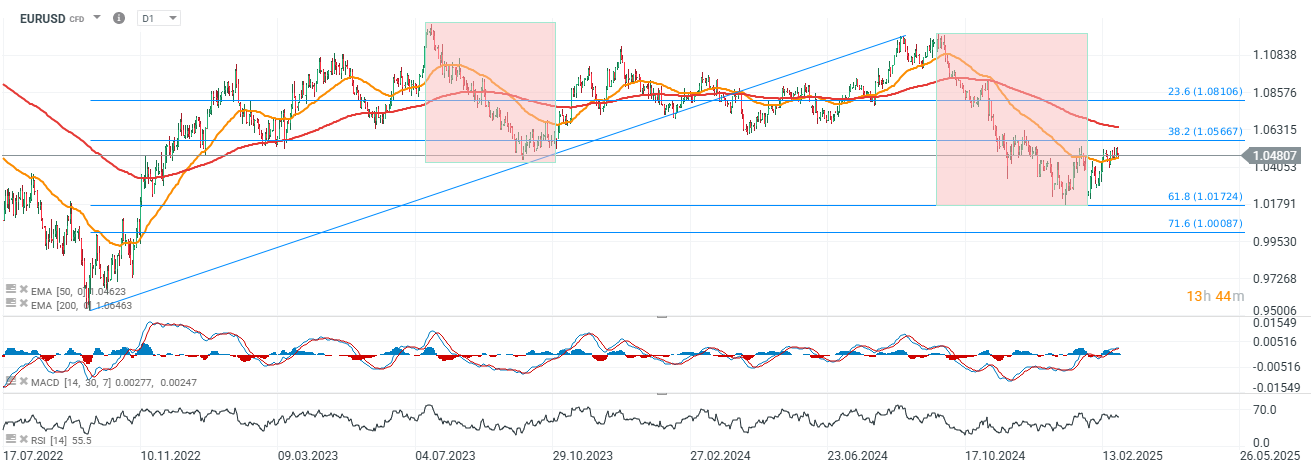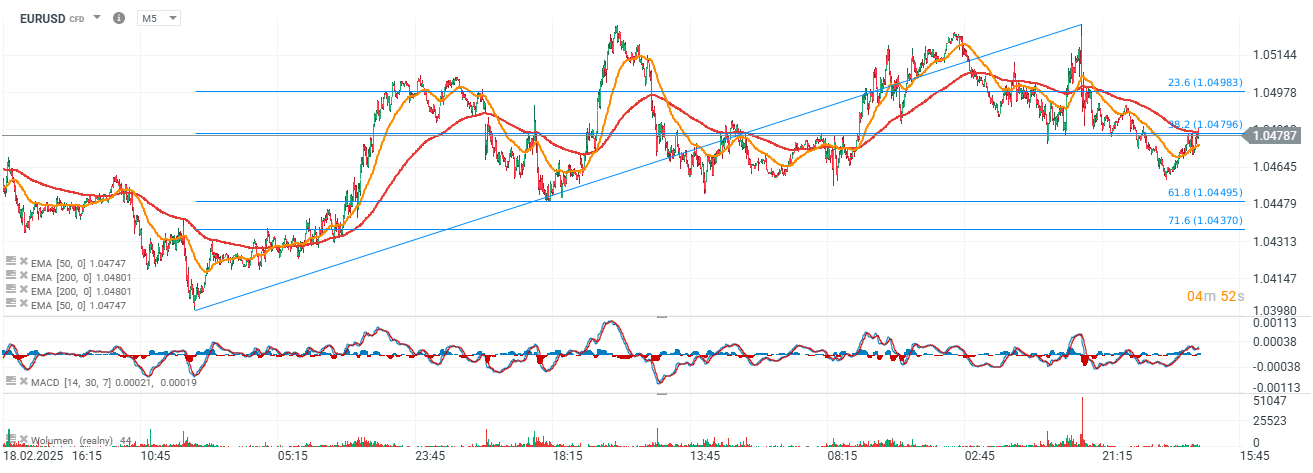Yesterday, Donald Trump announced plans to impose a 25% tariff on Europe, with the tariffs also expected to cover cars imported from Europe to the United States. However, the EUR/USD reaction to the renewal of these 'threats' appears relatively muted, as the pair declined from around 1.052 to 1.047. Recently, the pair's gains have been supported by mixed data from the U.S. economy, where inflation expectations (as well as inflation itself) are rising—yet the economy appears to be experiencing at least a temporary slowdown.
This is reflected in the latest data on consumer sentiment from the Conference Board, weaker services PMI, a disappointing retail sales reading, and cautious forecasts from some U.S. companies (such as Walmart), which have long been considered a barometer of consumer health. As a result, we see that the outlook for an expected (albeit still uncertain) economic rebound in Europe—potentially supported by greater flexibility for monetary easing at the ECB (where inflation appears to be under better control)—is at least temporarily offsetting bond yield differentials and the structural challenges facing the European economy.
In a scenario where U.S. consumer sentiment weakens further and key economic data underperforms, the market might start interpreting higher inflation readings as negative for the dollar. Stronger price pressures could tie the Federal Reserve's hands, limiting its ability to cut rates to ease labor market conditions or stimulate the economy. For the euro's strength, global sentiment—particularly risk appetite and investment flows into emerging markets (EM)—along with better inflation control compared to the U.S., will be crucial. Such a scenario would give the ECB more room for monetary easing and potential economic stimulus.
EUR/USD Chart (D1 Timeframe)
Looking at EUR/USD’s downward impulse, we can see that the pair rebounded after testing the 1.02 area, which aligns with the 61.8% Fibonacci retracement of the entire upward wave from 2022. The pair is also attempting to hold above the EMA50 (orange line). At least for now, the risk of a parity test has diminished, and investors have adjusted their positioning.
Source: xStation5

Source: xStation5
3 markets to watch next week (05.12.2025)
BREAKING: Lower Unemployment in Canada🍁USDCAD sharply declines📉
BREAKING: Euro-zone GDP slightly above expectations!📈 EURUSD remains stable
BREAKING: Germany industrial orders for October higher than expected; EURUSD gains 📌


